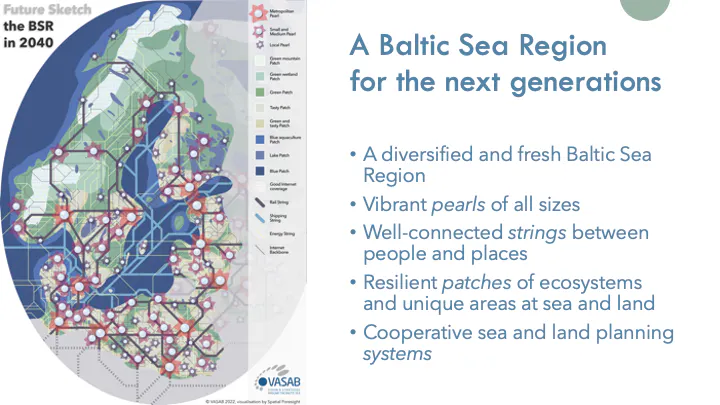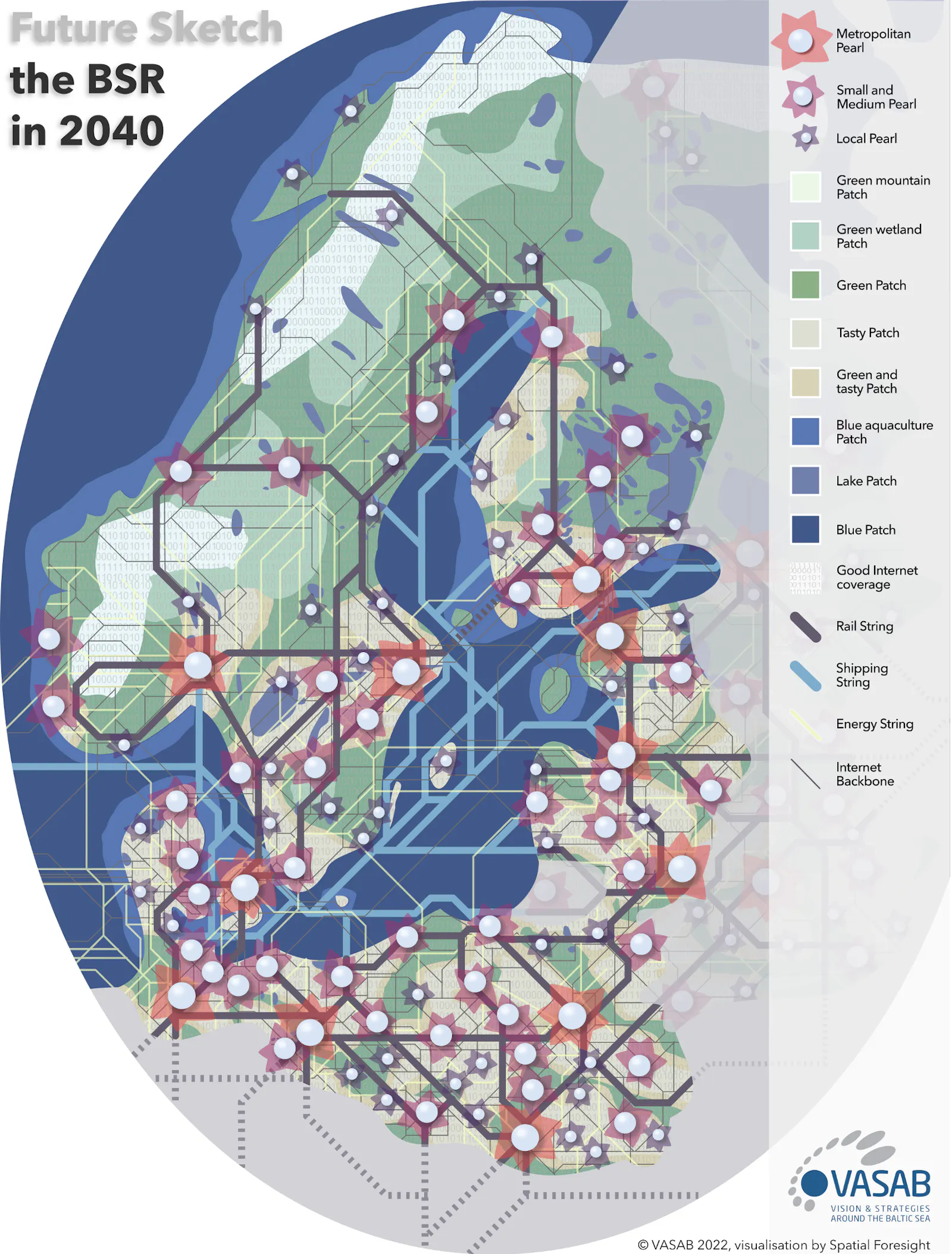A vision for the development of the Baltic Sea Region in 2040
June 2023

Visions are powerful because they define a desirable picture of the future that derives from the common caring and the common aspiration for a desired change.
On 02 June 2023, a new vision for the Baltic Sea Region was endorsed at 9th VASAB conference of ministers responsible for spatial planning and development of the Baltic Sea Region. The conference took place in Wismar, Germany.
VASAB has been a pioneer in developing spatial visions for the Baltic Sea Region. Already after the lift of the Iron Curtain, the VASAB’s Long-Term Perspective developed a desirable future for its places and people. The new vision adjusts the existing vision or long-term perspective to recent trends and developments. Sadly, this also includes a changed delineation of the area. Traditionally, Russia and Belarus have been active partners in the VASAB cooperation. Following Russia’s war on Ukraine, this changed. Halfway through the elaboration of the new vision, the geographical delineation was adjusted to new geopolitical realities.
However, as the new vision looks towards 2040, there might still be some hope that by then things may change to the better, and some of the previous cooperation can be taken up again. Last but not least, visions are about desirable futures, albeit ones which are shared by the involved players, and which are based on common values.
What can be a desirable future for the Baltic Sea Region?
The Baltic Sea Region for the next generations will be a region which has achieved the sustainable, digital and just transition utilising its territorial specificities. It is a spatially balanced and interconnected region where a healthy Baltic Sea is the central asset around which the region prospers.
Going back to the powerful metaphors developed for the first VASAB vision in 1994, the new vision for 2040 is structured along four territorial elements represented by four different metaphors: pearls, strings, patches and systems.

Vibrant Pearls of all sizes
To read this post you'll need to become a member. Members help us fund our work to ensure we can stick around long-term.
See our plans (Opens in a new window)
Already a member? Log in (Opens in a new window)


